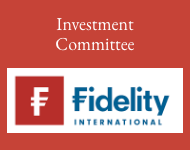Understanding behavioural biases can help paraplanners better support their advisers and the end client in towards more rational, disciplined investment behaviour, says Luke Sparkes, head of Technical Paraplanning, In Partnership Financial Advisers and member of the PFS Paraplanner Panel.
Understanding the psychological factors that influence financial decisions is key to helping clients make better choices and avoid common pitfalls. While modern portfolio theory assumes that investors behave rationally, making decisions solely based on risk and reward, the reality is that emotions and biases can significantly affect how we invest. Recognising these behavioural tendencies can help us, as paraplanners, support advisers/clients in managing their portfolios more effectively.
Anchoring
Anchoring occurs when clients fixate on a specific number, such as the price they originally paid for a stock, and use it as a reference point for their decisions. For example, if a client buys a share for £10 and it drops to £8, they may be reluctant to sell because they are anchored to the original price, rather than focusing on the company’s current outlook. Helping clients recognise this bias can encourage more rational decision-making based on the present value and future potential of an investment.
Endowment Effect
The endowment effect occurs when a client places a higher value on an asset simply because they own it. This is especially common when clients inherit shares or assets with emotional significance. They may hold onto these investments even if they no longer align with their risk tolerance or financial goals. To combat this, it’s helpful to have a clear, objective plan for when to buy and sell, reducing the influence of emotional attachment on decision-making.
Herding
Herding behaviour is when clients follow the crowd, often driven by media or peer influence. When markets are uncertain, clients may seek comfort in mimicking what others are doing, which can lead to bubbles or irrational trends. A historical example of this was the late 1990s technology bubble, where many investors piled into tech stocks based on hype, only for the bubble to burst. Advisers can help clients avoid herding by encouraging them to focus on fundamentals like price-to-earnings ratios rather than trends.
Loss Aversion
Loss aversion is a common bias where individuals prefer to avoid losses rather than make equivalent gains. The emotional impact of a loss is generally stronger than the joy of a gain. This bias often explains why some clients may hold on to poorly performing investments longer than they should. Selling an investment solidifies the loss, whereas holding onto it keeps the possibility of recovery alive, even if it’s unlikely.
Regret
Closely tied to loss aversion is the fear of regret. Investors may hesitate to sell losing investments, hoping to avoid the regret of realising a loss. Conversely, they may sell higher performing investments too early, out of fear that the gains might reverse, resulting in regret for not locking in profits sooner.
Overconfidence
Overconfidence in decision-making can lead to excessive trading. Clients who attribute their past investment successes solely to their own skill may trade more frequently, believing they can repeat those successes. However, this often leads to lower returns in the long run. Overconfident investors also tend to blame poor outcomes on external factors, rather than reassessing their own strategies.
How this affects paraplanners
In summary, understanding behavioural finance allows us to recognise the psychological factors that lead clients to make irrational investment decisions. For paraplanners, by being aware of these biases – such as loss aversion, overconfidence, and anchoring – we can help to educate advisers to guide their clients toward more rational, disciplined investment behaviour. This knowledge helps us add value to the advice provided, by our clear and concise suitability report wording. The aim of which is to support clients in ensuring that they’re making informed decisions that align with their long-term financial objectives.
Main image: joel-filipe-GVV669GVYjo-unsplash































